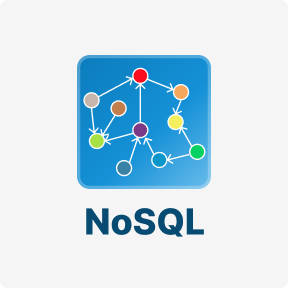We could create an initialization script, connect to the Docker container while it is running the database server, and execute the script. But this is a lot of manual work, and it is error-prone. To make it straightforward to download the application code and be able to run the application locally we are using Docker. With Docker we are wrapping our ASP.NET Core application inside of a Docker container.
In this article, we will cover the onion architecture using the ASP.Net 6 Web API. Onion architecture term is introduced by Jeffrey Palermo in 2008. This architecture provides us a better way to build applications using this architecture our applications are better testable, maintainable, and dependable on infrastructures like databases and services. Onion architecture solves common problems like coupling and separation of concerns.
Stories to Help You Grow as a Software Developer
Each layer/circle encapsulates or hides internal implementation details and exposes an interface to the outer layer. All layers also need to provide information that is conveniently consumed by inner layers. The goal is to minimize coupling between layers and maximize coupling within a vertical slice across layers. We define abstract interfaces at deeper layers and provide their concrete implementation at the outermost layer. This ensures we focus on the domain model without worrying too much about implementation details.
- This layer is used to communicate with the presentation and repository layer.
- The relaxation time of onion structure strongly depends on the shear rate γ˙.
- The Onion architecture was first introduced by Jeffrey Palermo, to overcome the issues of the traditional N-layered architecture approach.
- If we need anything from an external system or service, we can just create an interface for it and consume it.
- In onion cells the tiles look very similar to rectangular bricks laid in offset runs.
For our application End to End testing and BDD are the most appropriate testing strategies. In onion architecture, we have the domain layer, repository layer, service layer, and presentation layer. Onion architecture solves the problem that we face during the enterprise applications like coupling and separations of concerns. Onion architecture also solves the problem that we confronted in three-tier architecture and N-Layer architecture. In Onion architecture, our layer communicates with each other using interfaces. The number of layers in the Application Core will vary, depends on the project, but basically, it holds the business model, which includes entities, services, and interfaces.
Separation of concerns
This lack of organization at the project level leads to spaghetti code. To resolve this issue, we should design a multi-project solution, each layer should be a separate project. The modular design facilitates the introduction of new technologies or frameworks without affecting the core business logic, enhancing the scalability and future-proofing of the application. Each layer can be independently tested, allowing for comprehensive unit tests and ensuring that business logic remains isolated from external dependencies. To demonstrate a common folder structure based on Onion Architecture, let’s consider a hypothetical e-commerce application.
This layer usually holds ORMs for ASP.NET to fetch/write to the database. This layering can help in the separation of concerns, subdividing the solution into smaller units so that each unit is responsible for a specific task and also takes advantage of abstraction. For mid to larger scaled projects where multiple teams work, layering has very obvious advantages up its sleeves. It lets a specific team or individual work on a particular layer without disturbing the integrity of the others. It makes it much easier to track changes using source control. An Anemic Domain Model is a domain model that has no behavior, just data.
What if my language sucks?
The mausoleums of 12th-century Sufi mystics soar into the sky, and colourful bazaars spread acres wide, dotting the rich downtown core with Kazakh art and cuisine. However, neither of these two services must become a part of the CoreUtils because both highly depend on the boundaries, our application works within. Below is the list of criteria I use to move the functional to the CoreUtils project/folder.

We have now the knowledge of how the layer communicates with each other’s in onion architecture and how we can write the Generic code for the Interface repository and services. Now we can develop our project using onion architecture for API Development OR MVC Core Based projects. This layer lies in the center of the architecture where we have application entities which are the application model classes or database model classes. Using the code first approach in the application development using Asp.net core these entities are used to create the tables in the database. We are making suggestion by integral transformation method to be available for research fields of complex fluid.
Sciencing_Icons_Plants & Mushrooms Plants & Mushrooms
One may replace Application Services with Use Cases/Ports if it better suites the application. One may split Domain model into Domain Entities/Domain Services as well. We will follow the same project as we did for the Domain layer. Add the library project onion structure in your application and give a name to that project Repository layer. However, since the Web application and the database server will be running inside of containers, how are we going to create the actual database for the application to use?

Note that, ideally, you should always try to implement behaviors in Domain Models to avoid falling in the Anemic Domain Model pitfall. I highly recommend you to read the article from Jeffrey Palermo about Onion Architecture. This is just my point of view about the Onion Architecture.
Layer separation
We are creating a project called Presentation and giving it a reference to the Microsoft.AspNetCore.Mvc.Core NuGet package so that it has access to the ControllerBase class. Then we can create our controllers inside this project. We are using a Web API built with ASP.NET Core to create a set of RESTful API endpoints for modifying the domain entities and allowing consumers to get back the data. Now we only have one more layer left to complete our Onion architecture implementation.

The flow of dependencies is towards the core of the Onion. We will explain why this is important in the next section. Maybe an Entity Framework Core Layer for Accessing the DB, a Layer specifically made to generate JWT Tokens for Authentication or even a Hangfire Layer. You will understand more when we start Implementing Onion Architecture in ASP.NET Core WebApi Project. The Onion architecture, introduced by Jeffrey Palermo, overcomes the issues of layered architecture with great ease.
Implementation of Onion Architecture
Using this approach, we can encapsulate all of the rich business logic in the Domain and Service layers without ever having to know any implementation details. In the Service layer, we are going to depend only on the interfaces that are defined by the layer below, which is the Domain layer. This is another variant that I have noticed in many huge solutions.

